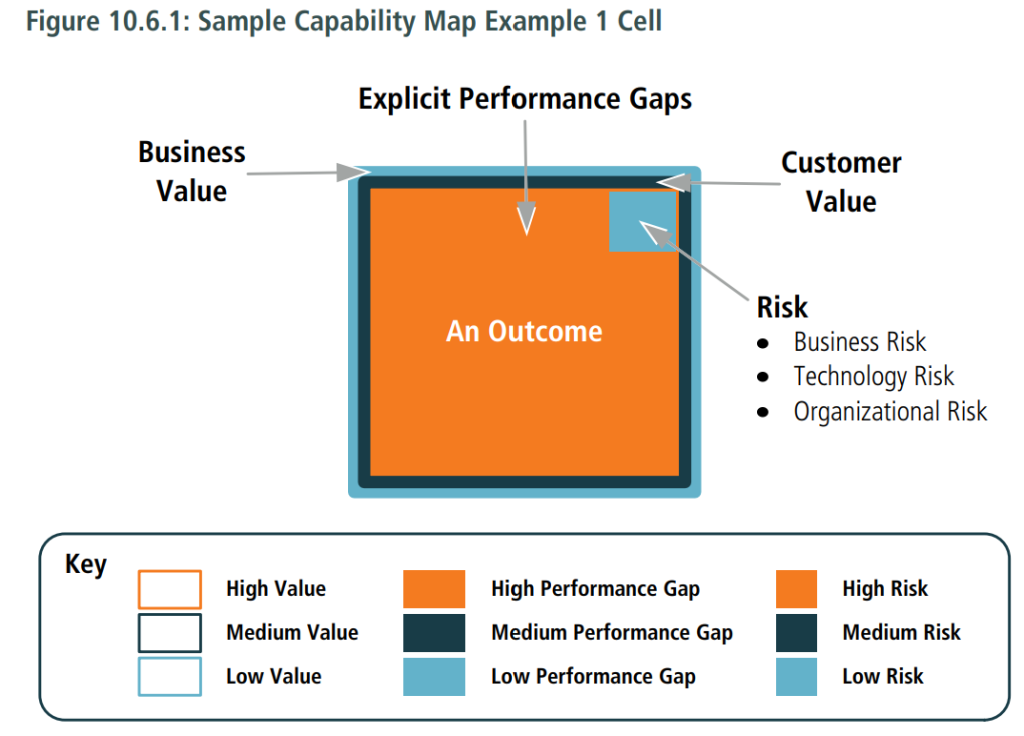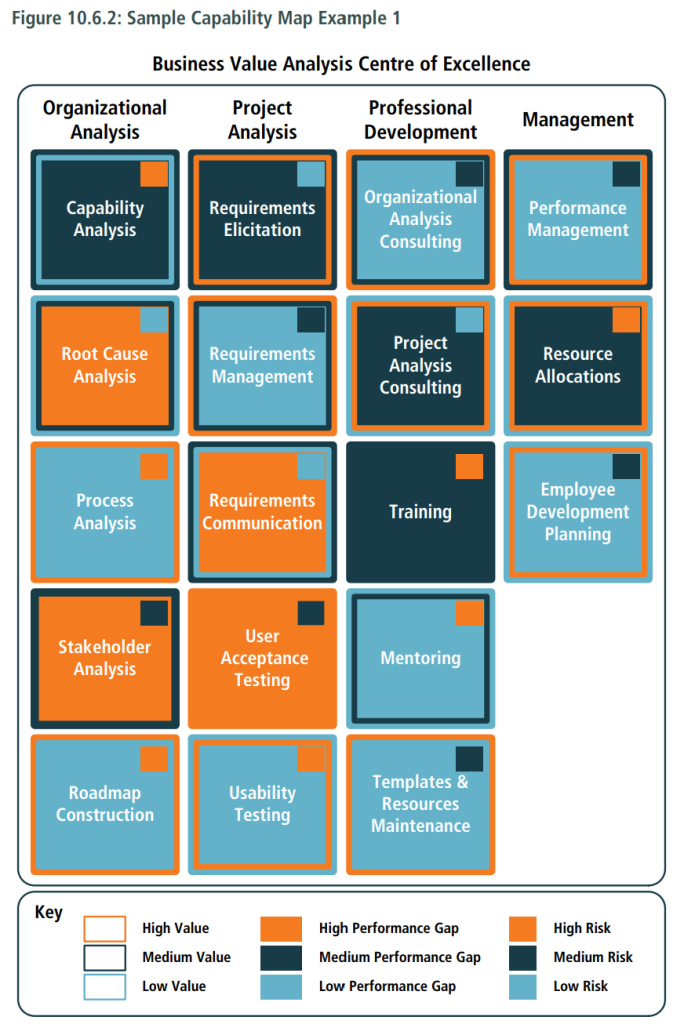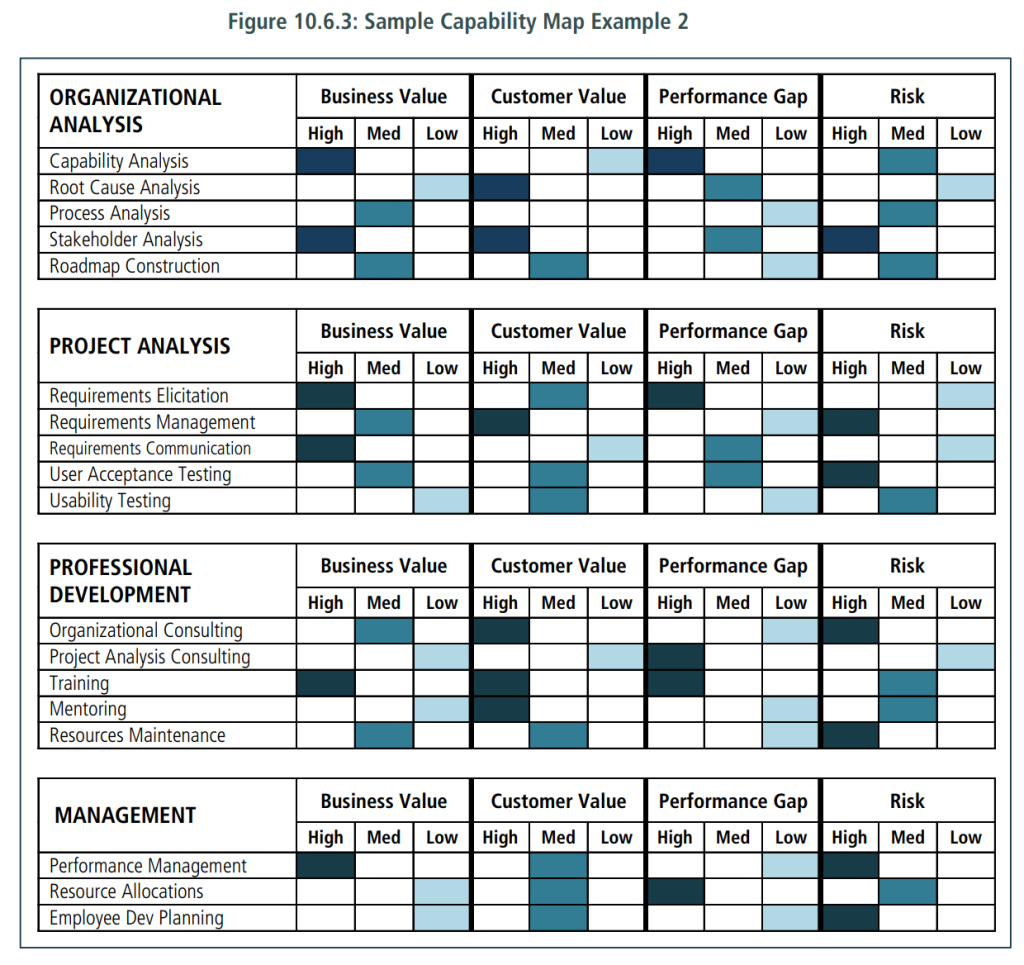10.6.1 Purpose
Business capability analysis provides a framework for scoping and planning by generating a shared understanding of outcomes, identifying alignment with strategy, and providing a scope and prioritization filter.
10.6.2 Description
Business capability analysis describes what an enterprise, or part of an enterprise, is able to do. Business capabilities describe the ability of an enterprise to act on or transform something that helps achieve a business goal or objective. Capabilities may be assessed for performance and associated risks to identify specific performance gaps and prioritize investments. Many product development efforts are an attempt to improve the performance of an existing business capability or to deliver a new one. As long as an enterprise continues to perform similar functions, the capabilities required by the enterprise should remain constant -even if the method of execution for those capabilities undergoes significant change.
10.6.3 Elements
.1 Capabilities
Capabilities are the abilities of an enterprise to perform or transform something that helps achieve a business goal or objective. Capabilities describe the purpose or outcome of the performance or transformation, not how the performance or transformation is performed. Each capability is found only once on a capability map, even if it is possessed by multiple business units.
.2 Using Capabilities
Capabilities impact value through increasing or protecting revenue, reducing or preventing cost, improving service, achieving compliance, or positioning the company for the future. Not all capabilities have the same level of value. There are various tools that can be used to make value explicit in a capability assessment.
.3 Performance Expectations
Capabilities can be assessed to identify explicit performance expectations. When a capability is targeted for improvement, a specific performance gap can be identified. The performance gap is the difference between the current performance and the desired performance, given the business strategy.
.4 Risk Model
Capabilities alone do not have risks – the risks are in the performance of the capability, or in the lack of performance.
These risks fall into the usual business categories:
- business risk,
- technology risk,
- organizational risk, and
- market risk.
.5 Strategic Planning
Business capabilities for the current state and future state of an enterprise can be used to determine where that enterprise needs to go in order to accomplish its strategy. A business capability assessment can produce a set of recommendations or proposals for solutions. This information forms the basis of a product roadmap and serves as a guide for release planning. At the strategic level, capabilities should support an enterprise in establishing and maintaining a sustainable competitive advantage and a distinct value proposition.
.6 Capability Maps
Capability maps provide a graphical view of elements involved in business capability analysis. The following examples demonstrate one element of a capability map that would be part of a larger capabilities grid.
There is no set standard for the notation of capabilities maps. The following images show two different methods for creating a capability map. The first two images are the first example and the third image is the second example.



10.6.4 Usage Considerations
.1 Strengths
- Provides a shared articulation of outcomes, strategy, and performance, which help create very focused and aligned initiatives.
- Helps align business initiatives across multiple aspects of the organization.
- Useful when assessing the ability of an organization to offer new products and services.
.2 Limitations
- Requires an organization to agree to collaborate on this model.
- When created unilaterally or in a vacuum it fails to deliver on the goals of alignment and shared understanding.
- Requires a broad, cross–functional collaboration in defining the capability model and the value framework.
